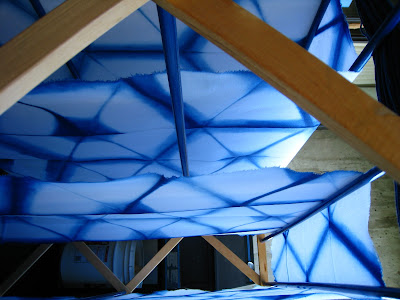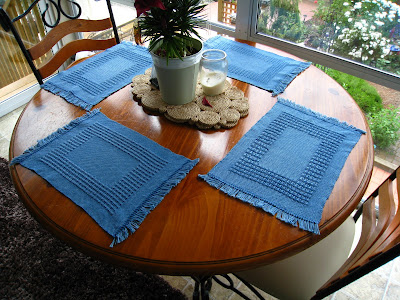Here are some images from an indigo dyeing session at home on the balcony. I opted for the synthetic indigo from Maiwa and I was really happy with the vat!
I wanted to try dyeing some natural cotton yarn and make some lace placemats (pattern by Carol Strickler from
Best of Handwoven - Top Ten Placemats ) for my mom for her birthday.
'Indigo white' vat
Couldn't resist dyeing a few shirts...
Here are the completed placemats. I dyed the cotton in two shades of indigo blue; a lighter one for the warp and a deeper shade for the weft.
After finishing these I wanted to make another set for my mother-in-law. This time I thought I would try a natural coloured warp and a darker indigo for the weft.
I like the appearance of these ones. I think the contrast of dark and light make them more visually interesting; they look somewhat French Provencal to me.






















